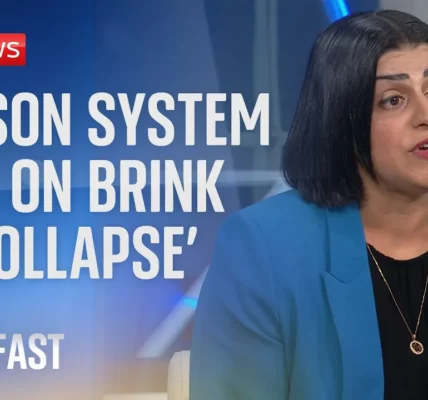This is Lebanon: Life in Shatilla Camp

Shatilla Camp stands as a poignant representation of the Palestinian refugee experience in Lebanon, highlighted by a history of conflict and resilience. This article delves into the current conditions in this overcrowded enclave, where refugees from various backgrounds face daily challenges amidst ongoing regional tensions.
Introduction to Shatilla Camp
Shatilla Camp, located in Lebanon, has served as a critical refuge for Palestinian refugees for decades. Established in the wake of the 1948 Palestinian exodus, this densely populated area has become a focal point for those escaping violence and instability. With its walls adorned with images of fallen leaders and symbols of resistance, the camp is a living testament to the enduring plight of a stateless people. The current situation is exacerbated by ongoing conflicts in the region, drawing in not only Palestinians but also Syrian refugees seeking safety. This article aims to provide an in-depth look at the life within Shatilla Camp, highlighting the struggles, resilience, and community spirit of its residents.
The Historical Context of Displacement
The history of Shatilla Camp is interwoven with the broader narrative of Palestinian displacement. Following the establishment of Israel in 1948, many Palestinians were forced to flee their homes, seeking refuge in Lebanon. This section explores the historical events that led to the creation of Shatilla Camp and its evolution over the decades.
The 1948 Palestinian Exodus
The year 1948 marked a significant turning point for Palestinian families, as it led to the displacement of hundreds of thousands of people. Many sought shelter in Lebanon, where they established communities in various camps, including Shatilla.
Life in the Camp
Over the years, Shatilla has evolved into a microcosm of Palestinian society, marked by both hardship and resilience. The camp has witnessed numerous conflicts, each leaving an indelible mark on its inhabitants. Today, it is home to many families who continue to struggle for basic rights and dignified living conditions.
Current Conditions in Shatilla Camp
Living conditions in Shatilla Camp are dire, characterized by overcrowding, inadequate infrastructure, and limited access to essential services. This section examines the challenges faced by residents in their day-to-day lives.
Overcrowding and Infrastructure
Shatilla is one of the most densely populated areas in Lebanon, with families crammed into small living spaces. The infrastructure is often insufficient to meet the needs of the residents, leading to a range of issues.
- Limited access to clean water
- Inadequate sanitation facilities
- Substandard housing conditions
Health and Safety Concerns
The health of residents is a pressing concern, with many facing threats from both environmental hazards and ongoing violence. The camp’s wiring is often unsafe, leading to potential fire hazards, further compounding the risks faced by families.
The Impact of Regional Conflicts
Shatilla Camp is not only home to Palestinian refugees but has also seen an influx of Syrian refugees escaping their own conflicts. This section explores how regional tensions and conflicts impact the camp’s residents.
Syrian Refugees in Shatilla
In recent years, Shatilla has welcomed many Syrian families fleeing the brutal civil war in their homeland. This influx has added to the existing challenges within the camp.
Fear of Escalating Violence
Residents of Shatilla live in constant fear of escalating violence, particularly due to the ongoing tensions between Hezbollah and Israel. The uncertainty about the future weighs heavily on families, as they worry about the potential for conflict to reach their doorstep.
Community Resilience and Support
Despite the dire circumstances, the residents of Shatilla Camp demonstrate remarkable resilience and solidarity. This section highlights the community efforts to support one another and cope with the ongoing challenges.
Mutual Aid and Support Networks
Families within the camp often come together to support each other, sharing resources and providing assistance to those in need.
- Establishing community kitchens
- Organizing educational programs for children
- Creating safe spaces for women and children
International and Local Aid Efforts
Various NGOs and local organizations work tirelessly to provide aid to the residents of Shatilla. These efforts include food distribution, medical assistance, and educational support, all aimed at improving the quality of life for those living in the camp.
Conclusion
The situation in Shatilla Camp serves as a microcosm of the broader Palestinian experience, marked by displacement, resilience, and hope amidst adversity. While the conditions remain challenging, the community’s spirit and solidarity provide a glimmer of hope for a better future. It is crucial for the international community to recognize and respond to the needs of those living in Shatilla and similar camps. We encourage readers to support humanitarian efforts aimed at assisting refugees and displaced individuals in Lebanon and beyond. Together, we can make a difference.
“`




